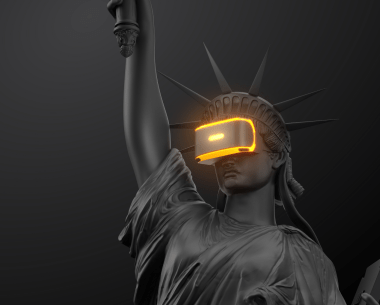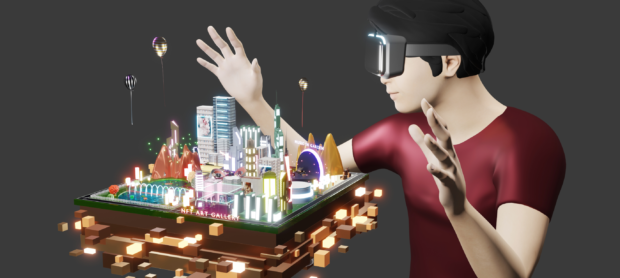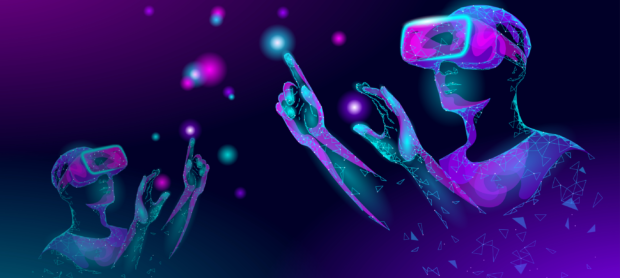The world of education is changing quickly as a result of the advent of new technologies and digital solutions. The introduction of digital learning tools by universities, colleges, and other educational institutions has led to the edtech industry experiencing explosive growth in recent years. Since remote learning has become crucial for many students globally, the COVID-19 epidemic has accelerated the adoption of edtech.
It is projected that demand for customized learning opportunities and online learning resources would rise further in the years to come. According to a study by HolonIQ, the edtech market would be worth $7.3T by 2025. The need for innovative teaching methods, the rise of online learning, and the increasing sums of money venture capitalists are spending in edtech companies are just a few of the factors driving this boom.
This post will look at the newest edtech trends that are expected to affect the industry in 2023. We will discuss the significant developments that teachers and students can look forward to in the foreseeable future, such as the emergence of artificial intelligence and adaptive learning as well as the growing importance of social and emotional learning.
Virtual Reality (VR) and Augmented Reality (AR)
The potential uses of the technologies virtual reality (VR) and augmented reality (AR), which have gained prominence recently, in the area of education is vast. Although AR improves the real-world environment by superimposing digital information on top of it, VR enables students to explore and interact with virtual settings.
We can anticipate seeing more and more educational institutions integrate VR and AR into their curricula in the upcoming years. For instance, history instructors might utilize VR to take their pupils inside historical moments, enhancing and enhancing their learning experience. Similar to this, medical students may utilize VR simulations to rehearse difficult surgical operations, giving them the chance to hone their abilities in a secure setting.
Across the world, augmented reality is also being utilized in galleries and museums to provide visitors with an engaging and instructive experience. Visitors can have a deeper knowledge and appreciation of the exhibits and objects they are witnessing by using augmented reality (AR).
The potential of VR and AR in teaching is enormous overall. We may anticipate seeing these technologies employed in an ever-expanding spectrum of educational environments, from primary schools to universities and beyond, as they continue to develop and become more accessible.


Gamification in education
Gamification is a method for involving people and inspiring them to do activities that have been utilized in a number of areas, including education. By offering prizes and incentives for completing activities or achieving goals, gamification in education may be used to motivate students to study and interact with the subject matter.
Points systems are one type of gamification strategy where pupils are rewarded with points for completing tasks or hitting goals. These points can be applied to unlock gifts or advance in a progression similar to a video game. Using leaderboards to compare pupils to their classmates may help instill a feeling of competition and drive for improvement.
Students are given a task to accomplish before they can advance to a new level of play in quests, another well-liked gamification strategy. It is also possible to utilize narrative frameworks, which immerse students in the learning process by having them function as players in a tale that is developing.
Microlearning
In recent years, the relatively new e-learning trend of microlearning has grown in popularity. It entails distributing material in manageable, on-demand portions. The theory behind microlearning is that knowledge may be more easily absorbed and retained when it is presented in short bursts as opposed to in lengthy, more conventional courses.
There are many uses for microlearning in the classroom and in the business. Employee training in areas like sales and customer service, as well as instruction in how to utilize new technology or software, are frequently conducted using this method. Employees may acquire new skills and information more quickly and efficiently by using microlearning, which divides the learning process into smaller, more digestible portions.
The adaptability of microlearning is one of its main advantages. The fact that the information is presented in bite-sized chunks allows students to access it whenever and whenever they have a few free minutes. This makes it the perfect option for working people who need to fit learning into their hectic schedules at work and at home.
We can anticipate seeing more and more educational institutions and corporations use microlearning in their e-learning programs as technology advances. Microlearning will play a bigger part in the educational environment of 2023 and beyond by giving students a flexible and accessible approach to obtaining and remembering information.

Learning analytics and data science
In the area of edtech, the subjects of learning analytics and data science are becoming more and more significant. Educators and administrators may better understand the requirements and preferences of particular students as well as pinpoint areas for development in the educational system as a whole by utilizing data to shed light on the learning process.
The capability of learning analytics to monitor student progress and engagement in real-time is one of its main advantages. Educators can spot kids who may be having difficulty and provide them the help they need to succeed by examining data like student activity, test results, and internet conduct.
The development of computer models and statistical techniques to analyze and understand massive volumes of data is the focus of data science, on the other hand. Insights into the learning process, such as the efficacy of certain teaching methods or the influence of various learning environments on student results, may be gained by educators and administrators by applying data science tools to examine educational data.
In order to enhance the educational experience for students, we can anticipate an increase in the number of educational institutions and companies investing in learning analytics and data science. The knowledge gathered from these domains will be even more useful as data availability increases in order to assist educators and administrators in streamlining the educational process and making sure that every student gets the resources they need to succeed.
Artificial Intelligence (AI) in education
In recent years, artificial intelligence (AI) has made tremendous advancements in education, and in 2023, its influence is only anticipated to increase. Artificial intelligence (AI)-enabled learning systems may evaluate data and tailor learning experiences for specific students, taking into account their strengths and shortcomings. As a result, each student may have more successful learning outcomes, improving the effectiveness and personalization of instruction.
AI can help teachers grade assignments and examinations quickly and accurately, freeing them up to concentrate on giving students more individualized attention. AI can also assist in identifying trends in student performance, giving teachers the opportunity to address any concerns before they escalate.
The use of chatbots is one of the most intriguing advances in AI and education. These virtual assistants are available round-the-clock to assist students and respond to their inquiries, giving them immediate access to support when they need it. This can be especially helpful for kids who have social anxiety or find it challenging to ask for assistance in a conventional classroom setting.


Edtech startups with a mission to transform the global learning ecosystem
Edtech businesses aim to change the whole global learning environment in addition to improving the learning experiences for students. Several of these businesses are devoted to creating tools that let learners access various materials, at their own speed, and in their own time. Others are developing technologies that let educators tailor instruction and provide students with more exciting experiences.
The creation of systems that employ blockchain technology to hold academic data and certifications is another trend among edtech businesses. This might potentially make it simpler for companies to check the credentials of prospective workers as well as enable people to access and share their educational accomplishments across various platforms and institutions.
Last but not least, a lot of edtech businesses are working to close the digital divide by giving children in impoverished areas access to educational materials. Although some companies are working with governments and non-profits to give free access to educational resources in places where there aren’t many schools or instructors, others are creating low-cost gadgets that let kids access instructional information without the need for an internet connection.
A lot of excitement but still some challenges
Edtech, a burgeoning field that’s generating a lot of buzz, is still grappling with a myriad of challenges that require prompt attention.
- Skill shortages threaten the industry’s existence. Edtech goods might become obsolete without the right knowledge. That’s why many of these businesses are now hiring former teachers and school administrators, who know what works in classrooms and how children learn best. These giants help edtech businesses innovate and succeed with their bottomless expertise.
- The edtech industry’s financial crisis is worsening schools’ resource shortages. So, schools are finding it harder to invest in newfangled tools and technologies from edtech entrepreneurs without a guarantee of their performance within their systems. Despite this, various creative funding methods have evolved. Crowdfunding services like DonorsChoose help instructors buy school supplies. These platforms allow donors to donate directly to instructors, who can then buy laptops and iPads as required instead of shipping them to school districts every year, which can cause logistical issues and high prices.

Conclusion
As the field of edtech continues to grow and evolve, there’s no better time to get involved. Whether you’re an educator, entrepreneur, or just someone with a passion for learning, there are countless ways to contribute to this exciting industry.
At Eventyr, we’re dedicated to helping our clients turn their ideas into reality. With a highly qualified professional team and years of experience in game development, programming and technology, we’re ready to take on any challenge.
So if you have an idea for an edtech product or service, don’t wait – contact us today to learn more about how we can help you bring it to life. Together, let’s make a difference in the future of education.




